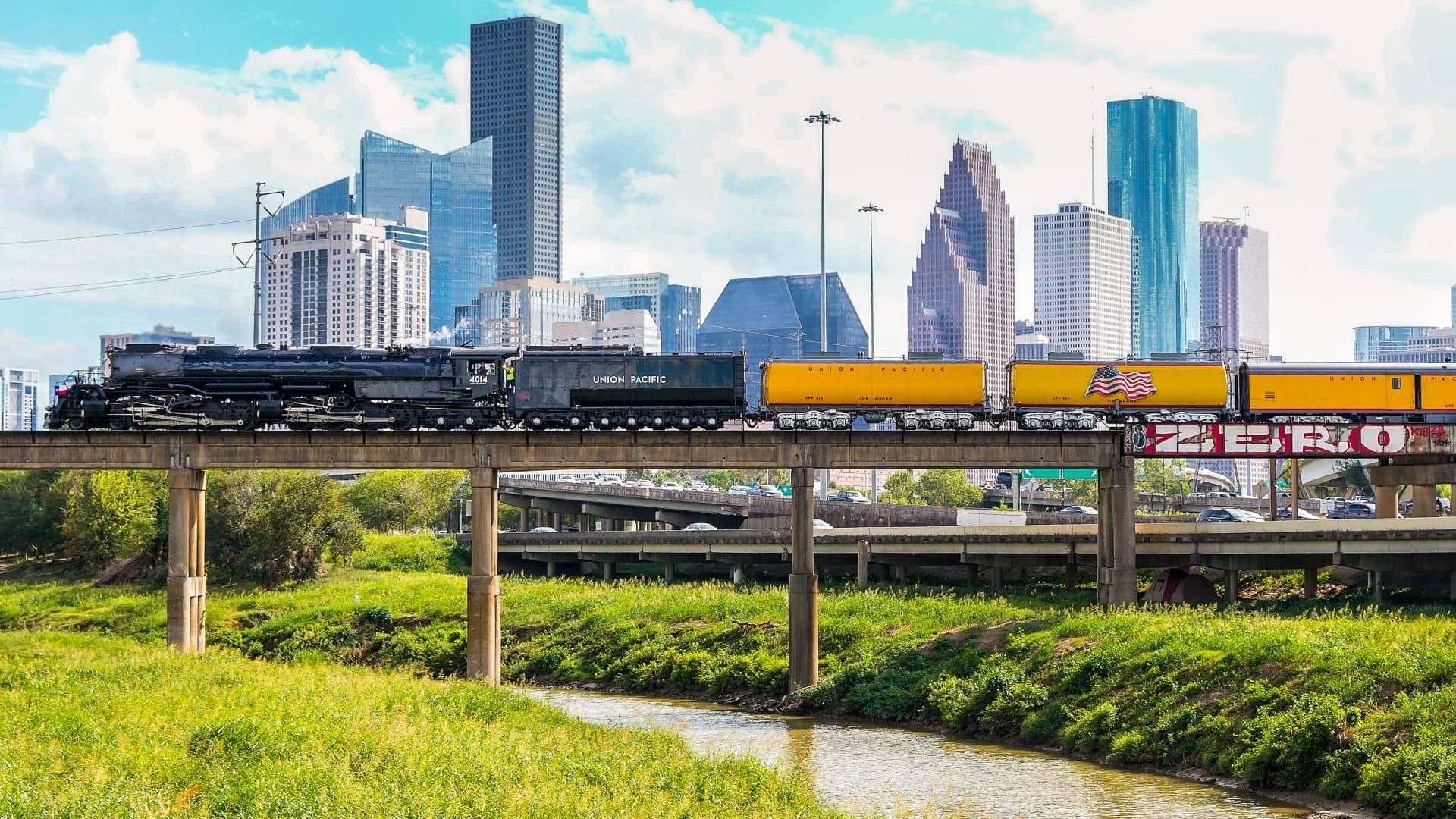The head of the biggest railroad labor union in the U.S. is warning of transportation “meltdowns” if labor concerns and conditions are not met in the proposed merger between Union Pacific and Norfolk Southern.
The merger, announced last week, would be the largest buyout ever in the rail sector, and would create the nation’s first coast-to-coast freight rail operator, combining Union Pacific’s strength in the western U.S. with Norfolk’s network primarily covering the eastern U.S.
SMART Transportation Division (SMART-TD) has already stated its intention to petition the government to block the deal, with Union Pacific’s safety record among its primary concerns.
“Without labor at the table from the start, management’s making a very, very serious mistake,” Jeremy Ferguson, president of SMART-TD, told CNBC. “They need our input. Our members are professionals, whether it be yard masters, whether it be conductors, engineers or the foreman in the yards. We know how to move the freight. We’re the only ones that do it safely and efficiently, and those are the experts. They need our voice if they’re going to know how to do this on day one, and without us at the table, we’re very fearful that they’re going to make the same mistakes and create meltdowns.”
The union represents roughly 125,000 active and retired railroad, bus and mass transit workers, and is part of the larger SMART union which represents over 200,000 workers in all.
Ferguson cited past deals in the rail sector in voicing his concerns, such as when CSX and Norfolk Southern acquired and divided up Conrail in 1997, and a similarly timed Union Pacific takeover of Southern Pacific.
“On day one of that, there was a massive meltdown,” Ferguson said of the Union Pacific-Southern Pacific transaction. “We’ve seen some of that with the Burlington Northern and the Santa Fe becoming one. So I’ve seen my share of meltdowns,” he added, referring to the combination of two rails which were ultimately acquired after their consolidation by Warren Buffett’s Berkshire Hathaway, as BNSF.
Union Pacific’s No. 4014 Big Boy makes its way across I-45, in front of the Houston skyline, on Friday, Oct. 4, 2024, in Houston.
Houston Chronicle/hearst Newspapers | Hearst Newspapers | Getty Images
“Union Pacific stands on its record, and it is clear. The Union Pacific–Norfolk Southern merger, when approved, will benefit America, supporting reindustrialization and moving products more efficiently across the U.S.,” a company spokesperson said, adding, “We have a history of implementing technology changes, such as NetControl across our 32,000-mile network without issue.”
On an analyst call hosted by Union Pacific last week to discuss the deal, CEO Jim Vena told analysts that the combined companies will deliver faster, more comprehensive freight service to U.S. shippers and grow as it competes better in the market.
Craig Decker, managing director and lead of the transportation & logistics infrastructure investment banking team at Brown Gibbons Lang & Company, said there could be the potential to displace or eliminate key transload, warehousing and container/chassis management at the intermodal interchange points as a result of the merger.
He said the implications of this deal extend to “the various partners in the supply chain, including the trucking companies, whose relationships and networks have been configured and are dependent on their existing rail relationships.”
The key determinant in whether this merger will go through is the Surface Transportation Board, which has historically frowned on mergers of Class 1 freight rails, the largest rail networks in the U.S., according to Decker.
“But a key factor which is not to be discounted is President Trump’s ability to influence members of the STB,” said Decker. “Under normal circumstances, I would say that the STB will disapprove of the deal as it did with CP/CSX, but given President Trump’s willingness to tackle incredibly tough negotiations and his success thus far, his influence becomes the wildcard which will decide whether this deal eventually gets approved,” he added.
On July 30, the STB posted on its website the formal notice of intent regarding the merger. Under the STB merger regulations, the railroads have a timeline to submit a merger application of three to six months. It stated that Union Pacific and Norfolk Southern plan to file their application on or before January 29, 2026. During the review process, the STB will open public comments on the deal.
Ferguson said the union will go before the board and lay out its case that the deal is not good to keep commerce and transportation safely moving in the U.S.
“First, we’re going to talk about the protections for all the employees,” he said. “That’s going to be very important. Second will be the shippers, because without our shippers, our customers, we would not have jobs, so we are very protective of them,” he added.
Ferguson said that the risk to jobs from creating a new transcontinental rail network will extend well beyond the two freight rail companies in the transaction, and potentially hit labor across the middle of the country. While he said there is no way to put a number on potential job losses, many jobs at key transport hubs across the U.S. could end up at risk if the deal is approved and ultimately leads to more consolidation in the rail sector. “Where the two [rails] meet, that will be the most delicate point,” he said. And then, if other major freight rail networks come into play in subsequent M&A, transport workers at key locations from Chicago to St. Louis, Memphis and New Orleans might also be at risk, he added.
Watch the full video above to learn more about why the nation’s largest rail union has come out against the freight mega-merger.





